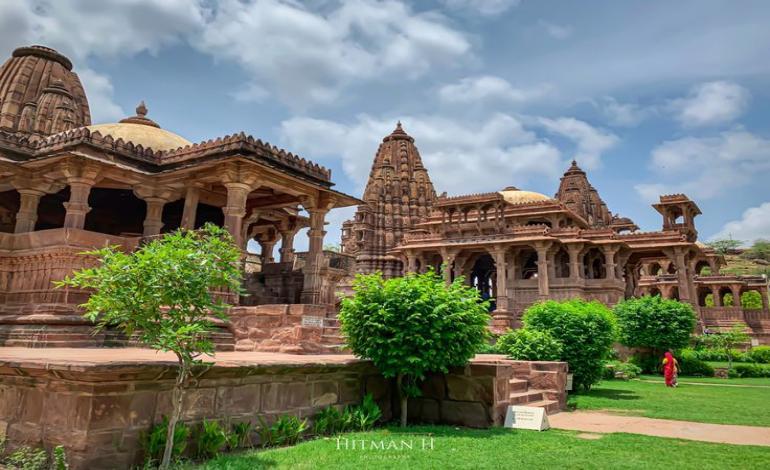


Spread across sprawling acres of landscaped greenery, Mandore Gardens offers visitors a unique blend of natural beauty and monumental history. Unlike the imposing forts and palaces of Jodhpur, this site presents a more serene and contemplative experience, where the past whispers through ancient stone memorials and crumbling temple complexes.
The gardens serve as the final resting place for Marwars rulers, featuring:
1. The Magnificent Cenotaphs (Devalis)
Fourteen towering memorials honoring Marwars rulers
The most impressive being the eight-story devali of Maharaja Ajit Singh
Blend of Hindu and Islamic architectural styles
2. Hall of Heroes (Shrine of the 330 Million Gods)
Houses giant, brightly painted statues of folk deities and Rajput heroes
Features the beloved Lok Devtas like Ramdevji and Goga Ji
Vibrant colors and dramatic expressions make for striking photography
3. The Rock Terrace & Ancient Temples
1st century ruins from Mandores time as Pratihara capital
Cave-like temples carved directly into the hillside
Peaceful atmosphere perfect for quiet reflection
4. Lush Greenery & Playful Monkeys
Beautifully maintained gardens with flowering plants
Home to over 300 mischievous but harmless langur monkeys
Picnic-friendly lawns under ancient trees
Unlike Jodhpur's better-known sandstone monuments, Mandore offers:
A more relaxed, spread-out experience away from crowds
Fascinating blend of nature and history
Insight into pre-Jodhpur Marwar history
Excellent for family visits with open spaces for children
Visitor Tips:
Best visited in the early morning or late afternoon
Wear comfortable shoes for exploring the expansive grounds
Don't miss the small government museum near the entrance
Combine with a visit to nearby Mandore Fort ruins
Cultural Significance
These gardens represent the original seat of Marwar's power before Rao Jodha moved the capital to Jodhpur in 1459. The site's transformation from royal capital to memorial gardens to public park mirrors Rajasthan's own journey through history.